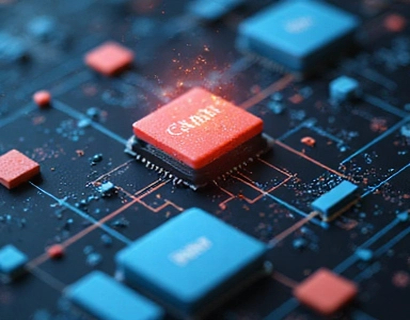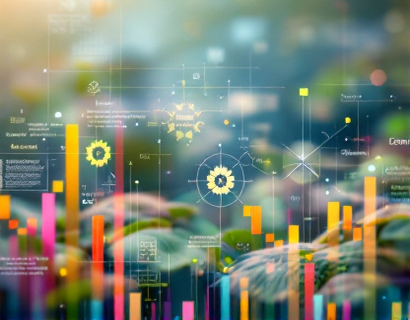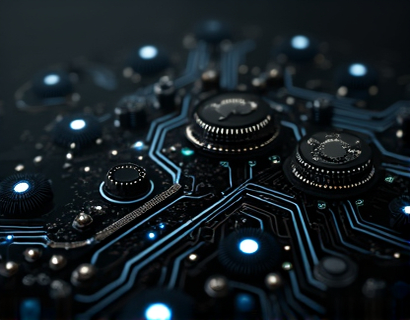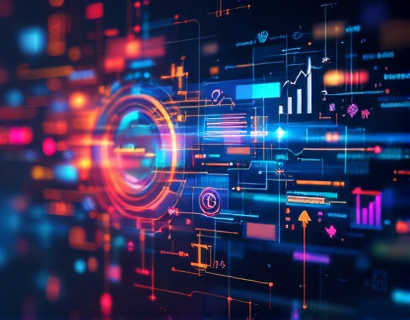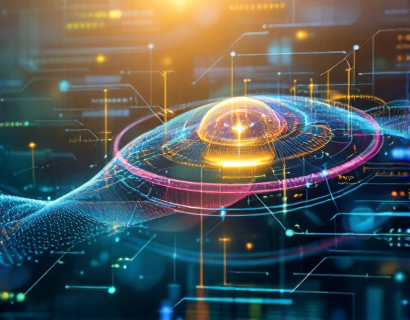Unleashing the Future of Digital Transformation: The Synergy of Crypto and AI
The intersection of cryptocurrency and artificial intelligence represents a pivotal moment in the evolution of digital technology. This convergence is not merely a technological advancement but a transformative force reshaping user experiences across various sectors. As we delve into this topic, it's essential to understand the foundational elements that drive this synergy and explore how it is revolutionizing the tech landscape.
The Foundations of Cryptocurrency and AI
Cryptocurrency, since its inception with Bitcoin in 2009, has redefined the way we think about money and transactions. It operates on blockchain technology, a decentralized ledger that ensures transparency, security, and immutability. This technology underpins not just digital currencies but a myriad of applications across industries, from supply chain management to healthcare.
Artificial Intelligence, on the other hand, encompasses a range of technologies designed to simulate human intelligence processes such as learning, reasoning, and self-correction. AI algorithms can analyze vast amounts of data, identify patterns, and make predictions or decisions with minimal human intervention. The integration of AI into blockchain technology has opened new avenues for innovation, particularly in enhancing security, efficiency, and user experiences.
Enhanced Security Through AI and Crypto
One of the most significant benefits of combining AI and cryptocurrency is the enhancement of security measures. Traditional security protocols can be vulnerable to sophisticated cyber attacks. AI algorithms can detect and respond to anomalies in real-time, providing a dynamic defense mechanism. For instance, machine learning models can analyze transaction patterns to identify fraudulent activities, thereby reducing the risk of financial losses.
Blockchain's inherent security features, such as cryptographic hashing and consensus mechanisms, are further fortified by AI. AI can optimize these mechanisms, ensuring that the network remains robust against potential threats. This synergy not only protects user assets but also builds trust in the digital ecosystem, encouraging more widespread adoption of crypto-based solutions.
Optimized User Experiences
The integration of AI into cryptocurrency platforms leads to more intuitive and user-friendly interfaces. AI-driven chatbots and virtual assistants can provide instant support and guidance, enhancing the user experience. These AI tools can understand natural language queries, offering personalized recommendations and solutions based on user behavior and preferences.
Moreover, AI can analyze user data to predict needs and preferences, enabling platforms to proactively offer services that align with user expectations. This level of personalization is a significant step forward in creating seamless and engaging user experiences, setting a new standard in digital interactions.
Smart Contracts and AI: A Powerful Combination
Smart contracts, self-executing contracts with the terms directly written into code, are a cornerstone of blockchain technology. When combined with AI, smart contracts become even more powerful. AI can automate the execution of smart contracts based on real-time data analysis, ensuring that conditions are met accurately and efficiently.
For example, in supply chain management, AI can monitor various parameters such as temperature, location, and status of goods. When these parameters trigger specific conditions in a smart contract, the contract executes automatically, facilitating smooth and transparent transactions. This integration reduces manual oversight, minimizes errors, and accelerates processes, leading to increased efficiency and reliability.
Decentralized Finance (DeFi) and AI
Decentralized Finance (DeFi) is a rapidly growing sector that leverages blockchain to create financial services without traditional intermediaries. AI plays a crucial role in enhancing DeFi platforms by providing advanced analytics, risk assessment, and automated trading strategies. AI algorithms can analyze market trends, predict price movements, and optimize portfolio management, offering users more informed and strategic financial decisions.
Furthermore, AI can help in identifying and mitigating risks associated with DeFi, such as smart contract vulnerabilities and market volatility. By continuously learning from data, AI models can adapt to changing conditions, ensuring that DeFi platforms remain secure and efficient. This synergy is pivotal in making DeFi more accessible and trustworthy for a broader audience.
Enhancing Cryptocurrency Trading with AI
Cryptocurrency trading is inherently volatile, making it both challenging and lucrative. AI-driven trading platforms can analyze vast amounts of market data, identify trends, and execute trades at optimal times. These platforms use techniques such as machine learning and neural networks to predict price movements and automate trading strategies.
AI can also help in managing risk by setting stop-loss and take-profit orders based on real-time market conditions. This level of automation not only saves time but also reduces emotional decision-making, leading to more rational and profitable trading outcomes. As AI continues to evolve, we can expect even more sophisticated tools that further enhance the trading experience.
User Behavior Analysis and Personalization
Understanding user behavior is crucial for any digital platform aiming to provide a tailored experience. AI algorithms can analyze user interactions, preferences, and feedback to create detailed user profiles. This data-driven approach allows platforms to offer personalized content, recommendations, and services that resonate with individual users.
In the context of cryptocurrency and AI, this means that users can receive customized insights into market trends, investment opportunities, and educational resources. By leveraging AI to understand user behavior, platforms can foster a more engaging and informative environment, encouraging users to explore and adopt new technologies.
Challenges and Considerations
While the convergence of AI and cryptocurrency offers numerous benefits, it also presents challenges that need to be addressed. One of the primary concerns is the regulatory landscape. As both fields evolve, regulatory bodies are increasingly scrutinizing their impact on finance, privacy, and security. Ensuring compliance with existing regulations while innovating is a delicate balance that requires continuous monitoring and adaptation.
Another challenge is the technical complexity involved in integrating AI with blockchain technology. Developing robust and scalable solutions that can handle the demands of real-time data processing and secure transactions requires expertise in both domains. Collaboration between AI researchers, blockchain developers, and industry experts is essential to overcome these technical hurdles.
Future Prospects
The future of digital transformation through the synergy of AI and cryptocurrency is promising. As technology advances, we can expect more innovative applications that further enhance user experiences. For instance, the development of decentralized AI models that run on blockchain networks could lead to more transparent and secure AI systems.
Additionally, the integration of AI with other emerging technologies such as the Internet of Things (IoT) and 5G networks will create a more interconnected and intelligent digital ecosystem. This convergence will not only improve efficiency and security but also open up new possibilities for smart cities, autonomous systems, and beyond.
For tech enthusiasts and early adopters, staying informed about these developments is crucial. Engaging with communities, participating in forums, and exploring pilot projects can provide valuable insights and opportunities to contribute to this exciting frontier of technology.
In conclusion, the combination of AI and cryptocurrency is not just a technological trend but a transformative force that is reshaping the digital landscape. By leveraging the strengths of both fields, we can create more secure, efficient, and user-centric solutions that drive the next wave of digital innovation.















